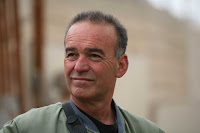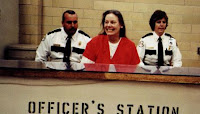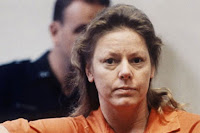- Documentaries do not "just happen". They have to be researched, meticulously planned, scripted and set up.
- Control is the key throughout the pre, production and post-production process.
Sequences
- Just as with drama, we direct sequences for documentaries which (based on careful research) represent reality.
- Close ups are key. Repeat the action and beware continuity.
- Make sure the sequences are interesting, creative and relevant, and properly set up for light and sound.
- Wherever possible shoot sequences with a tripod.
Sequencing contributors & talent
- When dealing with paid talent you can usually ask them to do whatever you creatively want for the film (within reason). When dealing with the members of the public this is potentially more tricky.
- Ensure you have talked through your plans with them prior to the shoot so that you know they are happy with arrangements.
- Gaining trust is key to dealing with 'real' people, this is built up during the production process.
- Your research should highlight potential actuality and relevant sequences which will "tell the story in pictures" so you can plan this in your shooting script.
Get good coverage - shoot to edit
- The art is to get as many options as possible for your edit.
- I.e shoot lots of different angles which will cut together for continuity.
- Remember the rule of 3 close ups for every wide shot - break each shot into action and reaction shots to give good coverage.
Get cutaways
- To ensure that you can always "cover" your edits, it is essential to shoot cutaways.
- GVs (general views) are a great way of doing this.
- They are generic shots which are relevant to the subject and location which can be slotted in anywhere in the edit.
- They need to be either close ups or defocused wides.
- It's important not to forget framing/composition.
Ensure there is continuity of Mise en scene
- Ensure each shot matches the next.
- Position of the subject in the scene must look as similar as possible.
- This includes costumes, props, lighting and colour.
Continuity of performance & orientation
- Performers need to ensure their delivery is also as similar as possible each time you re-take on a different shot size/angle.
- Pace, emotional delivery and even eyelines must match,
- Remember the 180 rule of orientation.
Match action edits
- Cutting on action is the best way to achieve the illusion of continuity.
- Cut whilst the action is in progress and pick up the movement on the incoming shot before it's completed.
- Editing between different size versions of the same shot necessitates matching the action.
- You will need to find the best exit point of the outgoing shot and the best in point on the incoming shot to give the illusion of a continuous movement.
- The feeling of continuity is emphasised by this method.
- Shooting this way will allow you to edit separate repeated angles to create the perception of continuity.
- If done well the edits are "invisible".
Actuality
- Actuality is a type of documentary filming which captures events and does little if anything to control them - realism. Therefore, in contrast to sequencing, you will not directing the action but responding to it.
- Thus actuality is very difficult to film and thus to edit. You cannot control the action so therefore controlling your camera and what you shoot is even more important.
- They are often shot handheld to improve responsiveness and flexibility. In fact conventions have evolved whereby the "wobbly" look of actuality is expected and adds to the sense of "reality" and events unfolding unfettered by the production team.
- Thus planning is vital for such shots. You need to do a careful recce so that you are aware of potential challenges during the shoot and can devise ways of dealing with them.
Actuality shooting strategies
- Letting the subject enter and leave the frame.
- Apply the rules of sequencing by controlling what and how you shoot.
- Filming plenty of reaction shots.
- Filming cutaways, establishing shots and non-sync wide shots.
- Always getting GVs/cutaways.
- Only shoot what you need.
- Plan use of sound kit carefully e.g radio mics on main character(s).
- Always get wildtrack/buzz.
Brief your camera OP
- By careful discussion prior to filming and through keeping your eye, not only on the events before you, but in the way in which they are being recorded, you can maintain a degree of control without interfering with events, but it's a careful balancing act to be learnt through experience.
Why do we need sequencing and actuality?
- It conveys a better feeling of 'real life'.
- Engaging the viewer - pace (faster than interview sync heavy).
- Helps to edit an illustrate interview sync clips.
- What starts out as a 30 minutes long interview will inevitably end up largely on the cutting room floor in a bid to reduce the interview to a duration possibly of a quarter of that length.
Visible or invisible director?
Reflexivity - The technique of exposing the filmmaking process, thus distancing itself from the personal authorship in making documentaries.
Self-reflexivity - Exposes not only the process of making film, but also the authors' own views and the journey they themselves make.
- Thus the director can become part of the film itself and takes on a more active role in the film.
- By making your own assumptions clear the viewer is empowered with a new understanding of the 'truth' unfolding before them.
Nick Broomfield's 'Aileen - Life and Death of a Serial Killer'
Nick Broomfield, Biog:
 - Studied law, political science and finally attended the National Film School
- Studied law, political science and finally attended the National Film School- First film shoot in 1971 whilst at film school called 'Who Cares' and was about slum clearance in Liverpool.
- He originally made observational documentaries and stumbled across his now signature style of placing himself within the film itself to make sense of his film 'Driving Me Crazy'.
 - Recently adopted what he describes as 'direct cinema' style in which real people play themselves in docu-drama-style- e.g 2006 film 'Ghosts' for Channel 4.
- Recently adopted what he describes as 'direct cinema' style in which real people play themselves in docu-drama-style- e.g 2006 film 'Ghosts' for Channel 4.Most well known film - 'Kurt and Courtney'.
- He has won numerous awards for his work including British Academy Lifetime Achievement Award for his contribution to documentary film making.
Background of the film:
 - In 1991 Nich Broomfield made a film, 'Aileen Wuornos: The selling of a serial Killier' which was about the family of America's first female serial killer, Aileen Wuornos, who were trying to sell her story to the highest bidder. Curiously it was Aileen herself who emerged as the most principled member of the family.
- In 1991 Nich Broomfield made a film, 'Aileen Wuornos: The selling of a serial Killier' which was about the family of America's first female serial killer, Aileen Wuornos, who were trying to sell her story to the highest bidder. Curiously it was Aileen herself who emerged as the most principled member of the family. - He subsequently remained in contact with her, writing to her until she was sent to subpoena to appear in the final state appeal before her execution.
- He subsequently remained in contact with her, writing to her until she was sent to subpoena to appear in the final state appeal before her execution.- Broomfield decided to make this, the second film, looking at her tortured childhood and life as a prostitute.
- Charlize Theron used Broomfield's documentaries about Aileen as the basis for her Oscar winning portrayal of the serial killer in the motion picture 'Monser'.
My thought on the documentary
After watching the documentary I ended up liking it more than I thought I would. Aileen's childhood and her relationship to her family, dad who got sent to prison few years after she was born, abandoned by her mother and Tyra who went behind her back to help out on a movie deal makes an interesting, heartbreaking and engaging story. It's easy to feel sympathy for Aileen even though you know she's a serial killer after hearing about everything she's been through. It's also interesting to see how cases like hers are being handled compared to how it would be handled if the same thing happened in Norway where there is no death sentence.
I liked how all the interviews were done on location, the use of GV's, POV, archive footage and how the story follows her and builds up to the execution. Having the presenter in frame gives a very "real" feeling to the documentary as you then get to see the presenters feeling and hear the presenters thoughts, although that also gives the feel that the presenter has sacrificed some of his objectivity sometimes in the doc.
What surprised me camera-wise was the amount of times they used zoom to get from wide to close up. This might be either because Broomfield was limited to one camera and didn't want to cut in fear of losing important details or because of the time he was taken to court for how he edited his first film and didn't want to be accused of making lies in his documentary. Another part that surprised me was some footage from an interview where the boom is clearly visible in the corner of the screen made it to the final edit of such a big documentary. But other than that it was a nicely shot documentary, and even though it might feel a bit distracting with the zoom and boom at some points it never makes you loose focus of what's actually happening in the story.
Trailer:
//Images\\
No comments:
Post a Comment